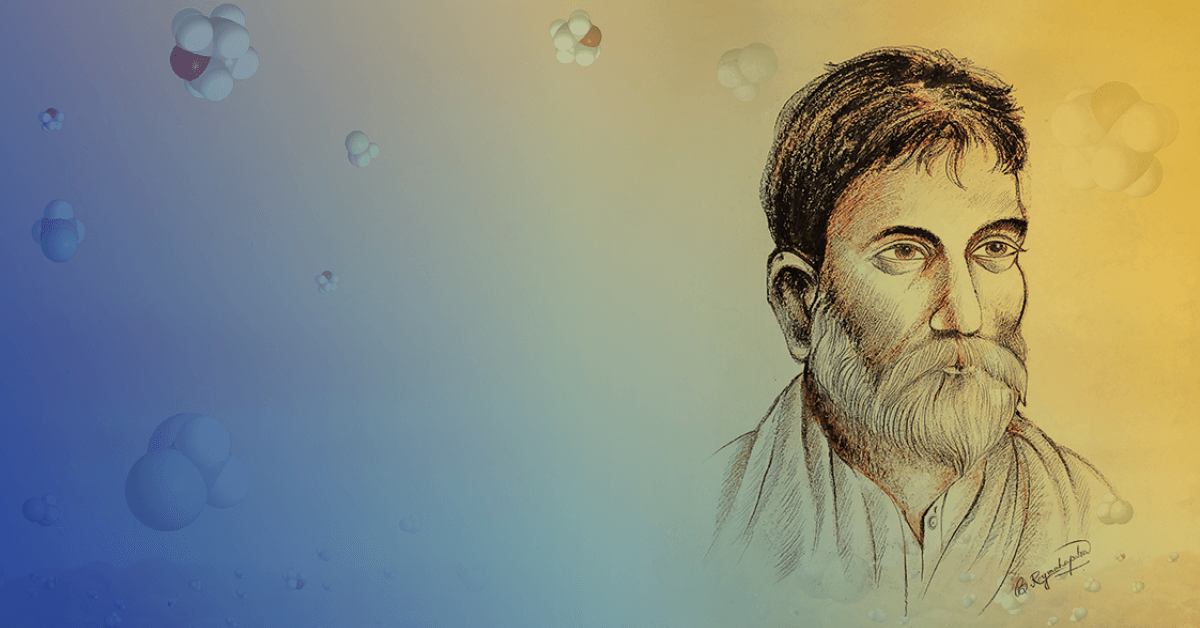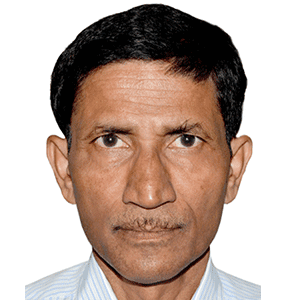
Sir Acharya Prafulla Chandra Ray (August 2, 1861 – June 16, 1944) was a remarkable scientist, literary figure, professor, industrialist, philanthropist, and much more. Widely revered as "the father of Indian chemistry," Ray was a pioneer and figurehead of modern chemical research in India.
Born in Raruli, Khulna District (now in Bangladesh), Ray excelled in his academic studies from an early age. He went on to complete his F.A. degree at the Metropolitan Institution (now Vidyasagar College), and he simultaneously began his first chemistry classes as an external student at Presidency College (now University) under Professor Alexander Pedler. He was immediately drawn to the field and decided to pursue a career in chemistry with dreams of helping India become a leader in scientific innovation. He continued his chemistry studies under the prestigious Gilchrist Prize Scholarship at the University of Edinburgh, where he went on to receive his B.Sc. and D.Sc.
Ray's research career spans numerous areas of chemistry, but he is most famously known for his work on organic and inorganic nitrites—earning him the nickname "Master of Nitrites." One of his most notable contributions in this area is the discovery of the stable compound mercurous nitrite in 1896, which laid the groundwork for years of discoveries and published research on the synthesis, structure, and decomposition of nitrites and hyponitrites of different metals. He authored more than 150 original research articles across all fields of chemistry.

As a professor, Ray was loved by his students and seen as a visionary ahead of his time, understanding the importance of the amalgamation of ancient and modern science and working to bring India to the forefront of scientific advancement and discovery. He believed in the ancient Indian philosophy: “Wish for victory everywhere except from your son and from your disciple.”
Even after his death, Prof. Ray's impact lives on in innumerable present-day research publications. To honor Prof. Ray's remarkable legacy, we have gathered a collection of articles published in ACS journals that build upon his seminal work and illustrate his lasting influence in the fields of organic chemistry, inorganic chemistry, and beyond.
Remembering Acharya Prafulla Chandra Ray: Articles from ACS Journals
Nitrate and Nitrite Reductions at Copper(II) Sites: Role of Noncovalent Interactions from Second-Coordination-Sphere
Aditesh Mondal, Kiran P. Reddy, Shubham Som, Deepak Chopra, and Subrata Kundu*
DOI: 10.1021/acs.inorgchem.2c02775
Design and Synthesis of Amphiphilic Catalyst [C16mim]5VW12O40Br and Its Application in Deep Desulfurization with Superior Cyclability at Room Temperature
Xiao-Xiao Xing, Hui-Li Guo, Tong Feng, Tian-Meng He, Wen-Shuai Zhu, Hua-Ming Li, Jing-Yu Pang*, Yan Bai*, and Dong-Bin Dang*
DOI: 10.1021/acs.inorgchem.3c00376
Helical {[HgS]}n Chain-Induced Balanced Nonlinear-Optical Performance for Trigonal Mercury Sulfide
Mei Yan, Wen-Dong Yao, Wenlong Liu, Ru-Ling Tang*, and Sheng-Ping Guo*
DOI: 10.1021/acs.inorgchem.1c02980
Exploration of the Atomic Pathway of Seed-Mediated Growth from Icosahedral [Au25(SR)18]− to Bi-Icosahedral Au38(SR)24 and Au44(SR)26 Clusters Based on the 2e– Hopping Mechanism
Jiao Peng and Yong Pei*
DOI: 10.1021/acs.inorgchem.2c03997
In Vitro and In Vivo of Triphenylamine-Appended Fluorescent Half-Sandwich Iridium(III) Thiosemicarbazones Antitumor Complexes
Mingxiao Shao, Meimei Yao, Xicheng Liu*, Chao Gao, Weiyan Liu, Jinghang Guo, Jiawen Zong, Xinzhuo Sun, and Zhe Liu*
DOI: 10.1021/acs.inorgchem.1c02250
Mechanism of the Aryl–F Bond-Forming Step from Bi(V) Fluorides
Oriol Planas, Vytautas Peciukenas, Markus Leutzsch, Nils Nöthling, Dimitrios A. Pantazis, and Josep Cornella*
DOI: 10.1021/jacs.2c01072
Visible Light-Mediated Thiolation of Substituted 1,4-Naphthoquinones Using Eosin Y as a Photoredox Catalyst
Bhawana Nagar and Basab Bijayi Dhar*
DOI: 10.1021/acs.joc.1c02924
Synthesis, Crystal Structure, and Nonlinear Optical Property of an Anhydrous Sulfate KTb(SO4)2
Qi Wu*, Can Yang, Jie Ma, Fei Liang*, Chunlin Teng, and Yeshuang Du
DOI: 10.1021/acs.inorgchem.1c01401
Acknowledgements
We are grateful to Prof. Chittaranjan Sinha (Jadavpur University, Kolkata, India), Prof. Ayan Datta (IACS Kolkata, India), and Dr. Gourisankar Roymahapatra (Haldia Institute of Technology, Kolkata, India) for their valuable contribution in collecting the information and identifying the articles in the diverse area of chemistry influenced by Acharya P. C. Ray.
Special thanks and appreciation to Mr. Bitihotra Roymahaptra (DAV Public School Haldia, Kolkata India) for creating the artwork of Acharya P. C. Ray.

Prof. Chittaranjan Sinha is a Professor at Jadavpur University, Kolkata, India. His research interests are ions/molecules sensing, CPs/MOFs, photoluminescence, CO2 reduction etc. He was the Honorary Secretary, Indian Chemical Society (Founded by Acharya Prafulla Chandra Ray, Founder President) and currently serves as Secretary for the Indian Photobiology Society.

Prof. Ayan Datta is a Professor at the Indian Association for the cultivation of Science (IACS) Kolkata, India. His research focuses on the application of quantum chemical descriptors of structure and reactivity of molecules, clusters and materials. His strong association with ACS has been as a former Editorial Advisory Board Member of the Journal of Physical Chemistry and Mentor for the IACS-ACS Student Chapter.

Dr. Gourisankar Roymahapatra is currently working as an Associate Professor of Chemistry at the Haldia Institute of Technology (HIT) Haldia, India. His area of research interest includes NHC complexes, organometallics, catalysis, antibiotics, anti-carcinogenic, gas adsorption, super alkali, computational chemistry and DFT. Dr. Roymahapatra is a Life Fellow of the Indian Chemical Society (FICS).